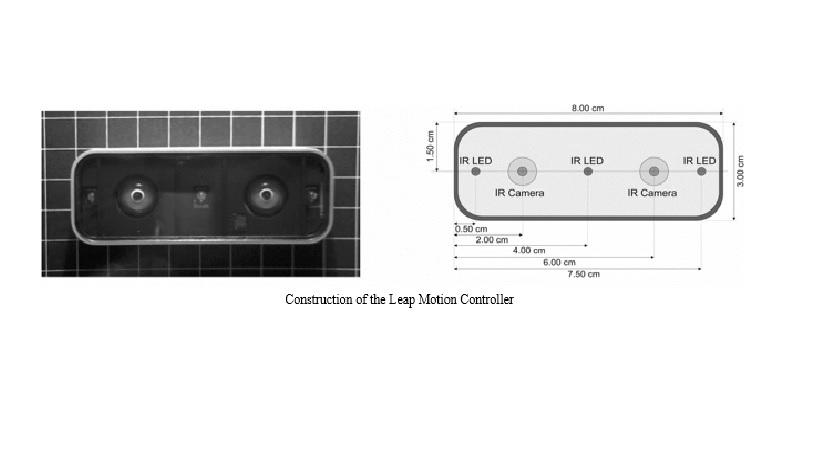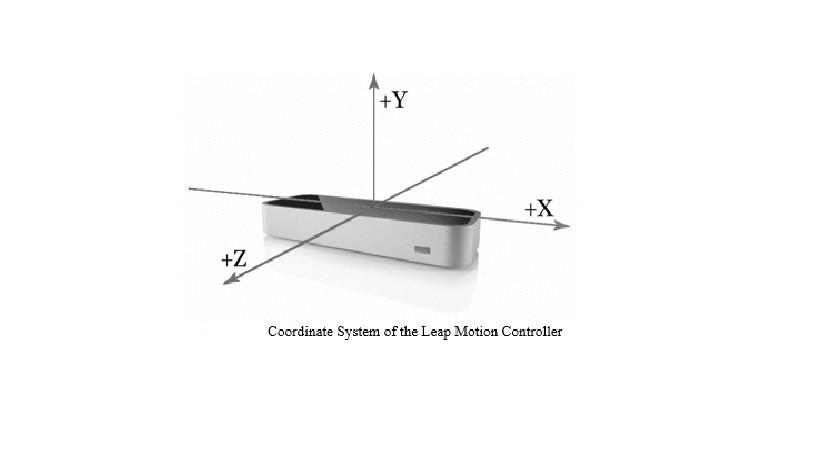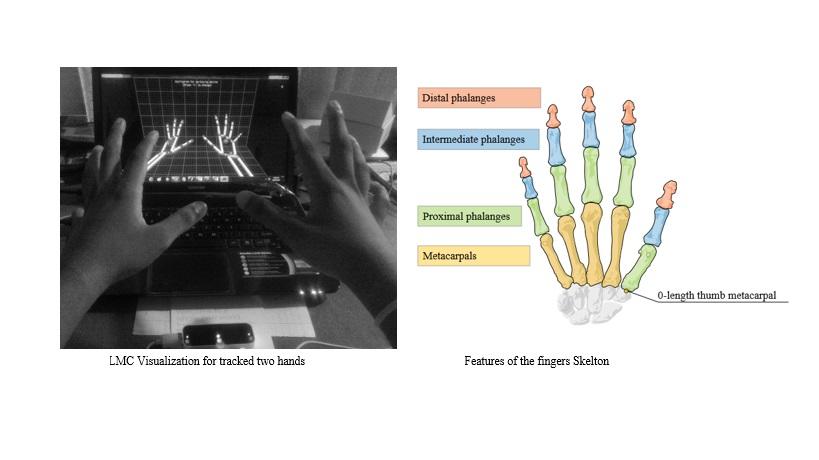
Hand gesture controller design was based on stereo vision technology. Stereo vision, is meant to be the extraction of 3D information from the digital images. It is an artificial stereopsis which is followed by two cameras to obtain depth and 3D structural information.
Literature survey reveals 3D data acquisition, vastly increases with the potential industrial applications within the last few years. Accuracy and the robustness of 3D sensors were increased while the product itself, became inexpensive. Mainly 3D sensors were used for object tracking, motion analysis, 3D scene reconstruction and gesture based user interfaces in literature.
The main reasons for choosing Leap Motion Controller as the 3D sensor for hand gesture detection are as follows.
• Low Cost. (With respect to other available 3D sensor modules this one is very cheap).
• The range of the sensor (1m) fits for the application.
• The sensor module is specially designed for the hand gesture tracking.
• Free SDK (Software Development Kit) and Libraries are available.
• Availability of the free support. (Blogs, forums and free testing software and applications).
• MATLAB compatibility. (Mat-leap integration between MATLAB and Leap is possible).
• Application novelty for manipulator robot integration.
• Accuracy fits for the application.
• Lightweight, portability and plug and play device.
The design orientation of both hardware and software of the Leap Motion, is concentrated to the hand gesture application development. Also the above mentioned features are readily available with the system and are causes for the selection of this device.

Leap Motion Controller is a conjunction with its API (Application Programming Interface) drive positions in Cartesian space with predefined objects like finger tips, pen tips etc. This is designed as a USB (Universal Serial Bus) peripheral device. Two monochromatic IR cameras and three infrared LEDs (Light Emitting Diodes) are assembled as shown in Figure. The LEDs generate a 3D pattern of dots of IR light and cameras are assembled in such a fashion to generate 300 frames per second of reflected data. Then the data will be sent to the V2 Tracking software and 2D frames generated by two cameras will be further analyzed to generate 3D positioning data.
As shown in the above figure Leap Motion Controller consists of a right-handed Cartesian coordinate system. The origin lies on the top of the Leap Motion Controller. X and Z axes lies in the horizontal plane and Y axis is vertical. Following Table shows the measurement details of the Leap Motion Controller. The measurements can vary according to the external conditions.
Measurements of Leap Motion Controller
Parameter | Measurement |
Distance | Millimeters |
Time | Microseconds |
Speed | Millimeters/second |
Angle | Radians |
Bellow Figure shows the Leap Motion Controller visualization and the generated skeleton for two hands. Also it shows the bones of the fingers that could be tracked and Metacarpal – the bone inside the hand connecting the finger to the wrist (except the thumb), Proximal Phalanx – the bone at the base of the finger, connected to the palm, Intermediate Phalanx – the middle bone of the finger, between the tip and the base and Distal Phalanx – the terminal bone at the end of the finger can be identified and tracked. Apart from the tip detection, this sensor can be programmed to detect the gestures, motions and tools.

